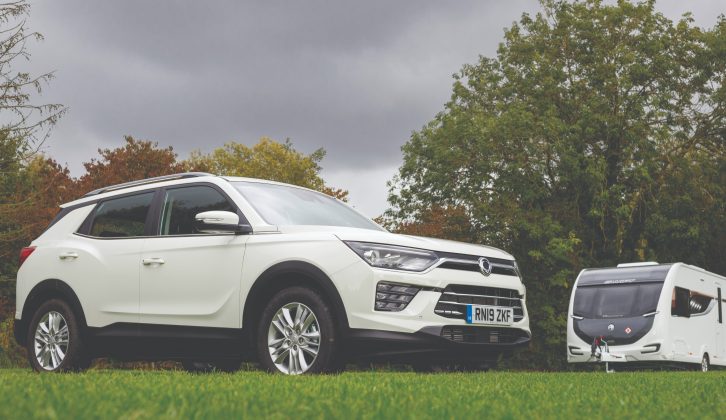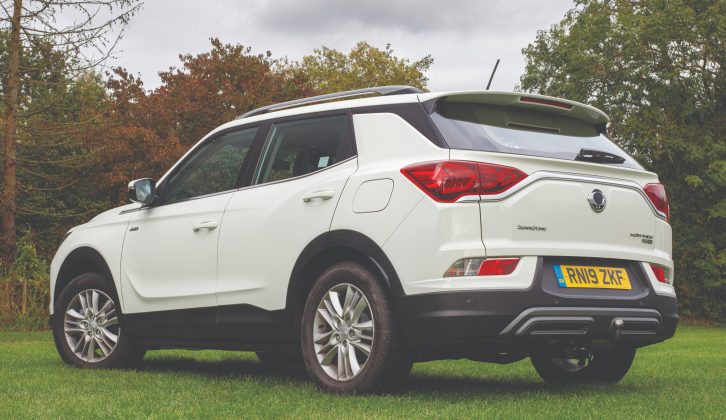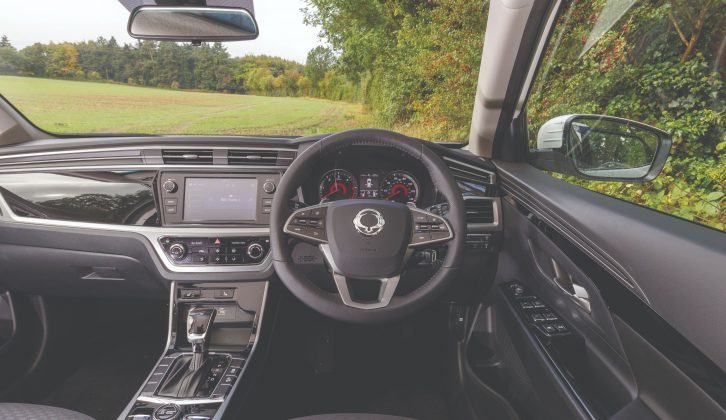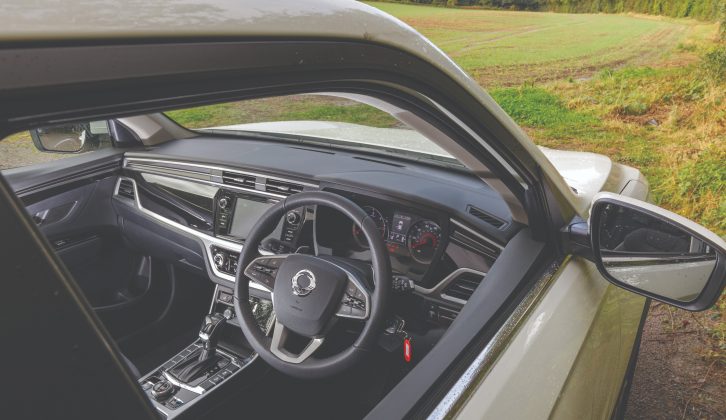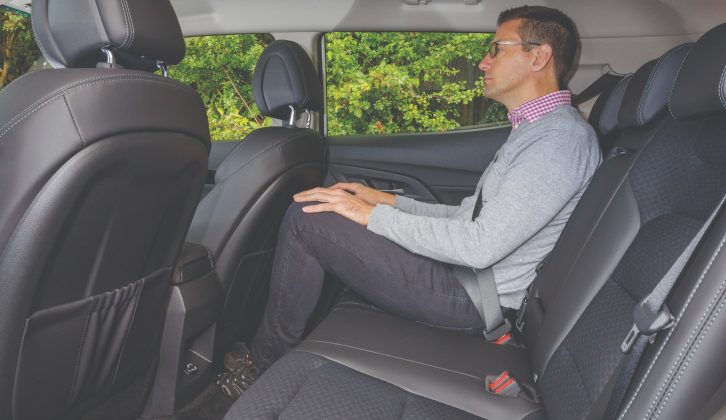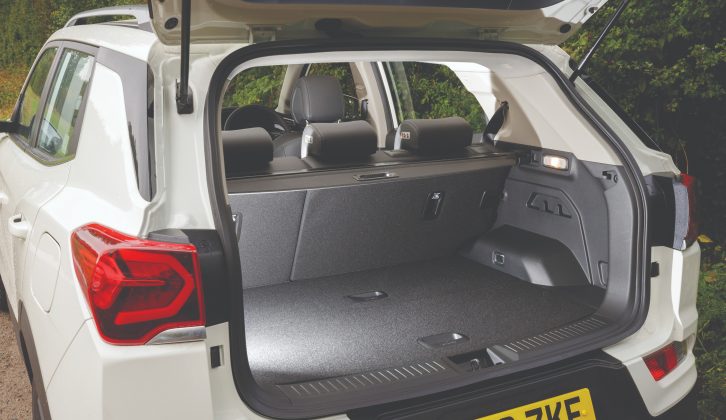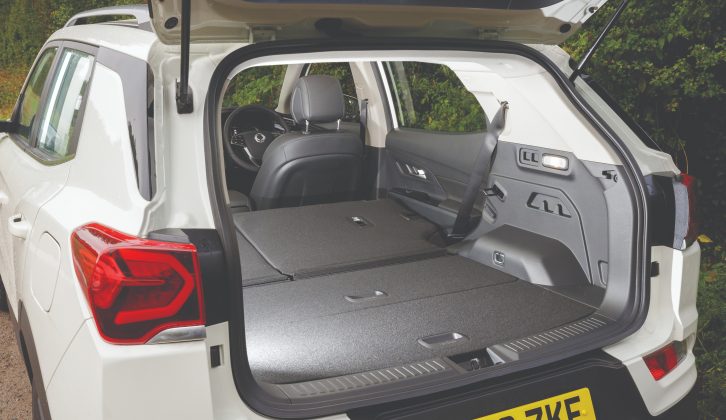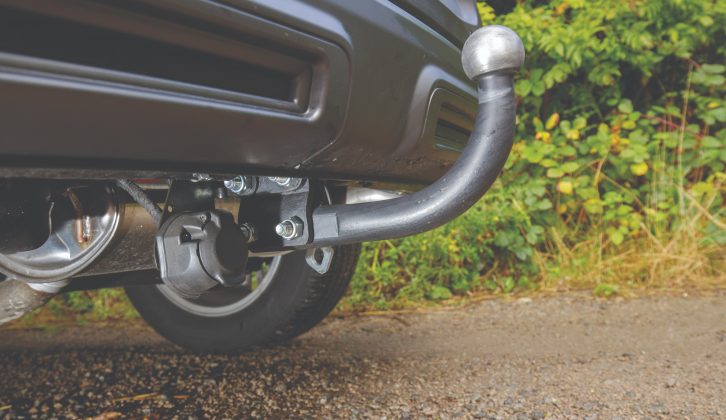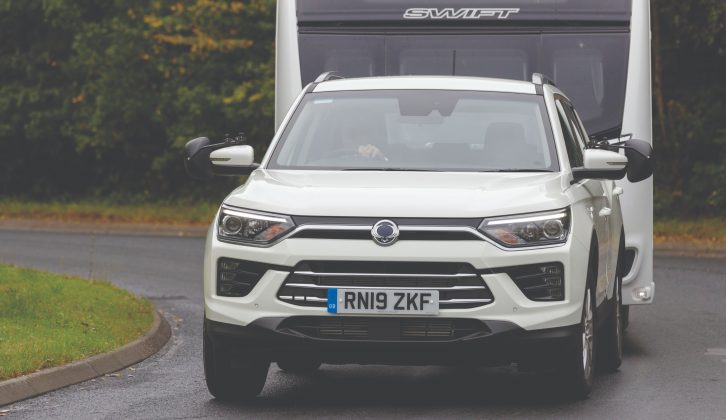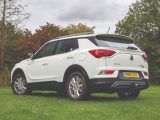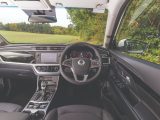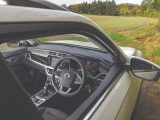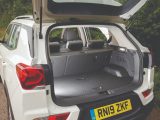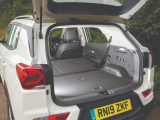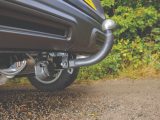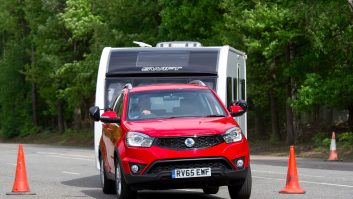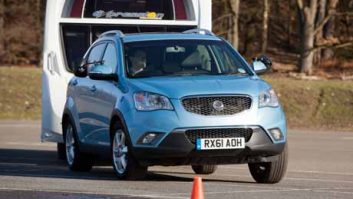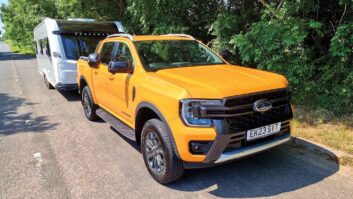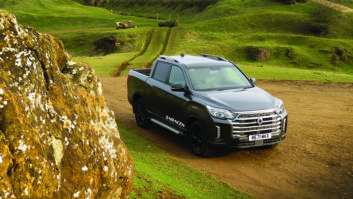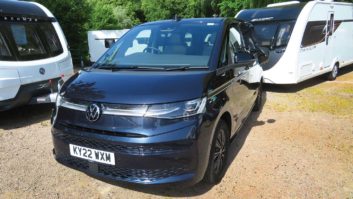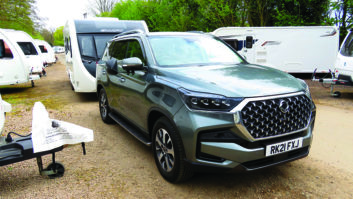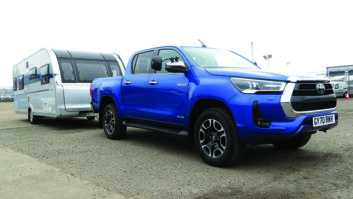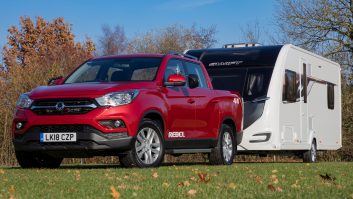Verdict
What you make of the new Korando really depends on the direction from which you approach it. We can’t help but think that SsangYong is going to lose some customers with a lighter, less powerful and more expensive car.
But forget about the old model and compare it with similar new SUVs, and the Korando holds its own. Although it’s no longer an out-and-out bargain, it’s still very good value, packed with kit at a competitive price.
And we’re impressed that SsangYong has created the Pioneer trim level based on feedback from caravanners. Four-season tyres will be a plus if you tour all year or regularly stay on grass pitches, and the full-sized spare gives peace of mind, albeit at the expense of boot space.
From the driver’s seat, the Korando is more polished and refined – not as sharp to drive as a Seat Ateca, and it doesn’t ride as smoothly as a Škoda Karoq, but the new SsangYong is far from outclassed.
Inside, it offers much more passenger space than many of its competitors. That’s most noticeable in the back, where there’s more than enough room for tall adults. In front, the dashboard is modern and the driving position comfortable.
As a tow car, the Korando feels stable on a still day. But it struggled with the hill start and fidgeted when overtaking HGVs. It might not have the bulk or muscle of its predecessor, and it’s not without a few foibles. But overall, the new Korando is a much improved car
Pros
Good value and packed with kit
Cons
Not as powerful as its predecessor
The latest Korando is altogether different from its predecessor. SsangYong has set itself a challenge with the new Korando: the Korean carmaker wants to keep the many caravanners who own the old car happy, while also appealing to mainstream buyers who might not have considered a SsangYong.
The upside to having a less powerful engine in the new Korando is improved fuel economy. On the WLTP combined cycle, the car returns 43.5mpg.
Towing
If you own the old SsangYong Korando, you might not be best pleased to learn that the new version is significantly lighter than its predecessor, so the matching ratios are not as favourable.
The diesel auto 4×4 we’re driving is the heaviest model in the range, with a kerbweight of 1700kg. That compares with 1709-1825kg for the old car, depending on the spec.
There’s more bad news if you are thinking of trading in your old Korando – the 2.2-litre engine has been replaced with a 1.6-litre, with significantly less power and torque.
Perhaps it’s fairer to compare the Korando with rivals, rather than the car it replaces. The 1.6-litre engine gives away just 12lb ft of pulling power, compared with the 150hp 2.0-litre diesel in the Škoda Karoq, and is 3lb ft stronger than the equivalent diesel in the Kia Sportage. So it’s there or thereabouts compared with similar SUVs.
The other towing stats look promising, such as the healthy 105kg maximum towball download and a 2000kg legal towing limit.
For our towing test, we matched the Korando to a Swift Expression 480 with a MiRO of 1351kg. The SsangYong towed the Swift at a reasonable pace, although it didn’t have a lot of punch to spare for overtaking. But it was happy to hold 60mph on the motorway.
In still air, the Korando proved quite stable, but when overtaking HGVs, we could feel the caravan tugging at the back of the car. The likes of the Kia Sportage or Seat Ateca feel more secure when they are caught by the bow-wave of a high-sided vehicle.
Every diesel Korando has a six-speed automatic gearbox. It changes gear smoothly. There’s a ‘sport’ mode, which makes for prompter changes and holds a low gear for longer, but we were happy to tow in the normal setting.
An automatic gearbox and four-wheel drive usually makes for easy hill starts. However, we were disappointed when we tried to pull away on a 1-in-10 slope.
In 4×4 auto mode, the car sends power to the front wheels only, until they struggle for grip. We found the system slow to respond, allowing a lot of wheelspin and vibration when pulling away. Even when the Korando found traction, acceleration was lethargic.
We tried the manoeuvre again with the car locked in 4×4 mode, but it still spun its front wheels and felt laboured. The Tarmac was damp, but even so, we were surprised at a 4×4 finding so little grip.
On arrival at our campsite, the SsangYong was easy to manoeuvre. The car’s rear-view camera provided a clear view of the towball when hitching up to continue our test drive. However, the fold-out 13-pin socket was tucked a long way under the bumper.All told, the Korando is a reasonably good tow car in most respects. But it moves around more than we’d like in dirty air, and performance in the hill-start test proved to be disappointing.
Everyday Driving
With the old Korando, you accepted a rather back-to-basics driving experience in return for enjoying a heavy tow car with lots of pulling power. The new model is no class-leader, but it is more accomplished in terms of everyday driving.
Sharp bumps are felt with a thump, and there’s some fidgeting on imperfect surfaces. But for the most part, it rides well. Cars with 17-inch alloys (like ours) are better than top-spec models with 19-inch alloys.
The engine leaves you in no doubt which pump to fill up at, owing to its clattery note when cold and a gruff sound under hard acceleration. But once cruising, the diesel is subdued and quiet. There’s some road noise at speed, but little wind noise – the Korando is quieter than a Kia Sportage.
Head to a twisting country road and the vague steering doesn’t encourage very much enthusiasm, but so long as you’re not too ambitious, the Korando corners neatly.
Around town, the automatic gearbox makes progress smooth, and the upright driving position helps the driver to see clearly. Front and rear parking sensors, a rear-view camera, and a very tight turning circle make the Korando easy to manoeuvre.
In everyday driving, the car isn’t outstanding in any one area, but it doesn’t have any major weaknesses, either.
Space
The Korando is roomier and more practical than its rivals, with one important reservation which we’ll come to later. The dashboard design is far more modern than the old car’s. It’s better finished than before, too, although on closer inspection you notice the hard plastics.
You do have a good range of adjustment for the driving position, with enough rearward seat travel for very tall drivers.
Those in the back have lots of space, with more legroom than you’ll find in the Kia Sportage, Seat Ateca or Škoda Karoq.
What’s more, there’s only a slight hump to the transmission tunnel and the cabin is wide, so travelling with three in the back won’t be a problem. But it’s a shame there are no face-level air vents for rear passengers.
The boot space is generous, provided you avoid the Pioneer model we’ve tested. The spec for this version has been chosen to reflect caravanners’ needs, and SsangYong says a full-size spare was high on that list. However, peace of mind in the event of a puncture comes at the price of much reduced boot space. The capacity is 407 litres, down from 551 litres for other versions of the Korando.
We know many caravanners value a full-size spare, but we’d like to see the option of a tyre repair kit or a space-saver wheel for those who want the Pioneer spec and more luggage space.
Running Costs
Is the new Korando good value? It depends on your perspective. The old range started from £17,495, whereas the new car costs upwards of £19,995 – for the petrol model (every version of the old car was a diesel). Our Pioneer 4×4 costs £28,495.
However, the Korando still undercuts most rivals. The closest equivalent in the Škoda Karoq range costs £30,785, while a Kia Sportage with broadly similar power and specification costs £30,040.
The upside to having a less powerful engine in the new Korando is improved fuel economy. On the WLTP combined cycle, the car returns 43.5mpg. On paper, several of the Korando’s competitors are more efficient. However, we were happy with the 27.1mpg we achieved while towing.
Pioneer models also come with 17-inch alloys and four-season tyres, fabric and faux-leather heated seats, cruise control, DAB radio and an eight-inch touchscreen.
The Korando has lots of safety kit as well as gadgets. Euro NCAP’s experts have awarded it five stars, and there’s a reassuring seven-year/150,000-mile warranty.
Technical Specifications
| Engine Size | 1597 cc |
| Kerbweight | 1700 kg |
| 85% KW | 1445 kg |
| Towball Limit | 105 kg |
| Maximum Towing Limit | 2000 kg |
| Power | 134 bhp |
| Torque | 239 lb ft |
| Offical MPG | 43.5 mpg |
| Towing MPG | 21 mpg |
| CO₂ | 170 g/km |
